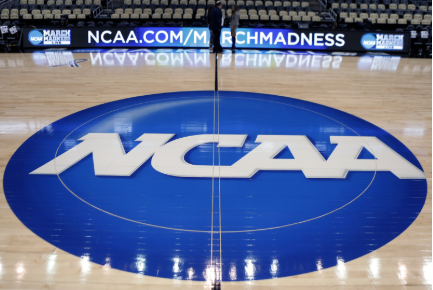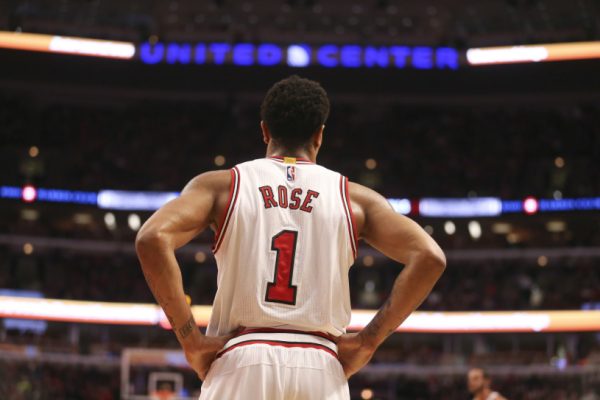As concussion awareness increases, protocols improve-+
High school athletes are twice as likely to report concussions than athletes in college, according to a recent study conducted by the National Academy of Sciences.
While a new Frontline documentary raises concerns about the NFL’s dealing with concussions, coaches and students at a high school level are identifying concussions differently than before.
“Awareness of concussion has definitely increased recently,” senior Natalie Toma said. “I am sure everyone who plays a sport has gotten a concussion at one point, but didn’t know it. Now that there’s more awareness, people can identify them better.”
As concussions become more prevalent, changes are being made at the high school level. Certain treatments have been established to minimize the damage of head trauma on students.
“Our protocol is highly effective,” athletic trainer Kent Hulnick said. “We have great concussion awareness among the community. We notify parents immediately and teachers so that symptoms can be watched for and recovery can be as quick as possible.”
According to the Consensus Statement on Concussion in Sport, a concussion is a stunning, damaging, or shattering effect from a hard blow to the head resulting in disturbance of cerebral function. However, determining whether an individual has been concussed can be difficult.
Because studying of concussions has only begun recently, there is no definite way to determine if an individual has been concussed.
“It is hard to perceive what a concussion is,” freshman football coach Stephen Brown said. “Concussions are a new science that we don’t know enough about yet. But when dealing with students, we air on the side of caution.”
FCPS bases concussion protocol on the Consensus Statement. Part of the protocol on an amateur and professional level requires being able to identify symptoms such as headaches, unclear thinking, confusion, or drowsiness.
“Coaches, players, or teammates can identify concussions,” Hulnick said. “Awareness has been raised by a video all student athletes have to watch, so people know what to look out for.”
Although 22 symptoms are identified in the Consensus statement on Concussion in Sport, the symptoms and effects can vary drastically per individual.
“There is such a large variety of symptoms,” Hulnick said. “There is no way to tell what the effects will be because Athlete A can have a headache for one day with longer lasting effects than Student B who had a headache for four days. It all depends on the person”
Despite a highly individualized concussion reaction, research done by Boston University Center suggested that high levels of intense physical contact exposure can result in permanent brain damage.
In more extreme instances, excessive head trauma can cause Chronic Traumatic Encephalopathy. CTE is a progressive disease diagnosed in individuals with a history of head trauma.
This neurodegenerative disease linked to dementia, memory loss and depression in former NFL players.
At the student level, common effects of concussions deal with the inability to stimulate the brain without experiencing pain or discomfort.
Students who receive concussions also deal with shorter term effects in the duration of their concussion. Sophomore James Stassinos received a concussion during football season from repetitive hits on the defensive line.
“It was really hard to concentrate on school related things,” Stassinos said. “I would get headaches when I tried to an essay or math homework and it was difficult to do things that would usually come easily to me.”
Nationally, there is a heavy focus on concussions in regard to the NFL, however football is not the only contact sport with the ability to cause concussions. According to a poll done on 100 students, 44 percent had at least one concussion.
Toma suffered her concussion heading a goalie punt in a soccer game, which affected aspects of her daily life.
“I was out for six months because of an untreated concussion,” Toma said. “My grades went down and I could not focus on anything, but not playing sports really affected me. Sports are my life and I couldn’t participate in them.”
Senior Abby Reinhold received a concussion when a spiked volleyball hit her between her eyebrows.
“When I got my concussion from volleyball, I was out for two weeks,” Reinhold said. “I was emotional and I couldn’t do work or read or stimulate my brain for two weeks.”
There are measures that can be taken by students to prevent concussing.
“Concussion prevention depends on the sport,” Hulnick said. “Neck strengthening, properly fitted mouth guards and helmets, along with good playing techniques all can help prevent an athlete from concussing.”
Freshman Eric Kiss took personal precautions to prevent receiving a concussion on the football field.
“I got a minor concussion last year,” Kiss said. “This year, though, I got a helmet that is really cool with extra cushioning and a bigger face mask to prevent me from getting concussions.”
Football has adapted at the NFL and school level to help prevent concussions, although football has the inevitable risk of injury. Precautions have been taken to reduce the impact of concussions, but some argue that we cannot eliminate them completely.
“We teach proper form and tackling, along with proper equipment,” Brown said. “However, football is a sport of collision. To avoid collision would be impossible.”
Research of concussions increased significantly and as research continues, a better science to handling concussions will emerge. For the time being, concussions will be dealt with cautiously to protect students.












